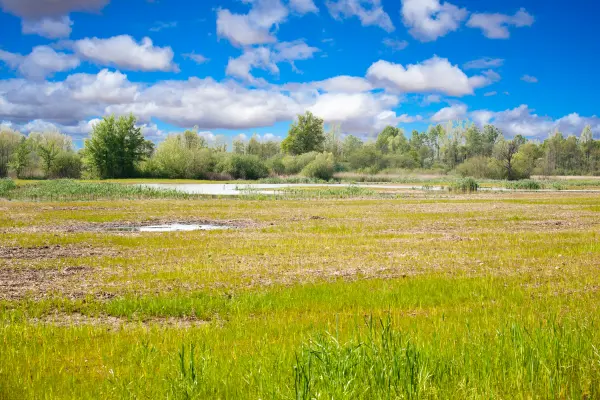- Agricultural and land use innovations are critical for sustainable food production as the global population rises, focusing on resource efficiency and minimizing environmental impact.
- New farming practices aim to reduce emissions, combat climate change, and promote biodiversity, transitioning agriculture from an ecological burden to a restorative force.
- These technologies not only increase agricultural yield and reduce costs but also bolster economic livelihoods, creating new opportunities and fostering a cultural shift towards sustainability.
“Can we feed our growing world without harming the Earth?”
Amidst the challenges of climate change and environmental degradation, Impact Technologies emerge as beacon of hope. These innovations play a crucial role in addressing our world’s most pressing ecological challenges – they are reshaping our interaction with our environment. Agricultural and Land Use Innovations particularly stand out by providing sustainable solutions to nourish the growing population on Earth while nurturing its ecosystems.
Why Agricultural and Land Use Innovations are Important in Addressing Climate Change
The escalating challenges of climate change intensify the critical role agriculture and land use must play in mitigation, as our world grapples with these issues. Innovations in agricultural and land use promise sustainable development. They serve to bridge the gap between environmental conservation— an increasingly important practice—and meeting global population’s growing demands.
Ensures the World will be Fed Sustainably: Innovations in agriculture–pivotal for sustainable food production strategies–ensure that we hold the key to feeding a global population projected at 10 billion by 2050: these innovative advancements not only provide sufficient sustenance, but also maintain ecological balance. As this demand intensifies and strains our Earth’s resources further, it becomes imperative more than ever before to drive these solution-oriented initiatives; critical necessity is thus placed on implementing innovation-driven systems.
Promotes Environmental Stewardship: Cutting-edge agricultural practices promote environmental stewardship by emerging to counteract traditional farming’s detriments: deforestation, water scarcity, and biodiversity loss. Striving for a harmonious relationship with nature, these innovative methods aim not only to use resources thoughtfully but also replenish them; this embodies the concept of environmental stewardship.
Combats Climate Change: Undergoing a transformation, agriculture both affects and contributes to climate change. Enhanced techniques in land use and farming reduce emissions while reinforcing the resilience of farms against climate anomalies, thus actively combating the challenges posed by changing environmental conditions.
Optimizes Resource Utilization: Innovative agricultural practices optimize the utilization of natural resources: as water, soil and energy inevitably dwindle; these innovations ensure their efficient use – thereby securing availability for future generations.
Bolsters Economic Livelihoods: By bolstering economic livelihoods, these innovations–through their capacity to amplify yields and curtail costs–bestow significant financial advantages upon billions across the globe: individuals whose sustenance hinges on agriculture.
What Does Success in Agricultural and Land Use Innovations Look Like?
The advent of successful Agricultural and Land Use innovations ushers in a paradigm shift: sustainable practices transition from being exceptional to becoming standard. This marks an era where technology and nature harmonize. This alignment fosters resilience, propelling our society towards heightened environmental consciousness.
Thriving Ecosystems: Agriculture, once an ecological burden, will transition to a restorative force. It revitalizes soils, conserves water thereby nurturing biodiversity in the process.
Enhanced Climate Resilience: Practices such as agroforestry and conservation tillage could enhance carbon sequestration, reduce greenhouse gas emissions, and fortify farms against climate change’s uncertainties. These efforts would actively counteract the impact of excessive CO2 in our atmosphere.
Improved Food Security and Nutrition: By leveraging advanced technology and sustainable practices; increasing agricultural yields; and enhancing the resilience of crops to pests, as well as changing weather patterns: we ensure a steady–and indeed nutritious–food supply for our burgeoning global population.
Greater Economic Prosperity: Innovations in agriculture promise an outcome of increased productivity and diminished losses, thereby fostering economic stability and prosperity for farmers globally. Should they embrace sustainable farming methods, it could usher the adoption into new markets while concurrently generating job opportunities.
More Holistic Land Management: Beyond individual farms, the innovations in Holistic Land Management would extend to a more comprehensive approach: managing various landscapes such as urban areas, forests and wetlands. This method—holistic management—incorporates ecological, social;, and economic factors with an aim towards ensuring sustainable coexistence between human inhabitants and their natural environment.
Cultural and Social Rejuvenation: As sustainable practices proliferate, they will not only foster stronger community bonds and preserve traditional agricultural knowledge but also potentially initiate a global cultural shift. This transformation could redefine our relationship with the land as one characterized by respect and balance.
The Future of Farming and Beyond
Beyond the mere enhancement of farming methods, agricultural and land-use innovations encapsulate a profound reconceptualization of our relationship with the Earth. These advancements bear the potential to usher in an era where agriculture transcends being merely sustenance; it becomes instrumental in realizing environmental stewardship, economic resilience – even social harmony.
Those at the helm of this transformative endeavor strive not only to grow food but also nurture a sustainable future. A future, wherein every field, farm and forest contribute significantly and forms part of an overarching global narrative defined by balance, regeneration, and hope.











